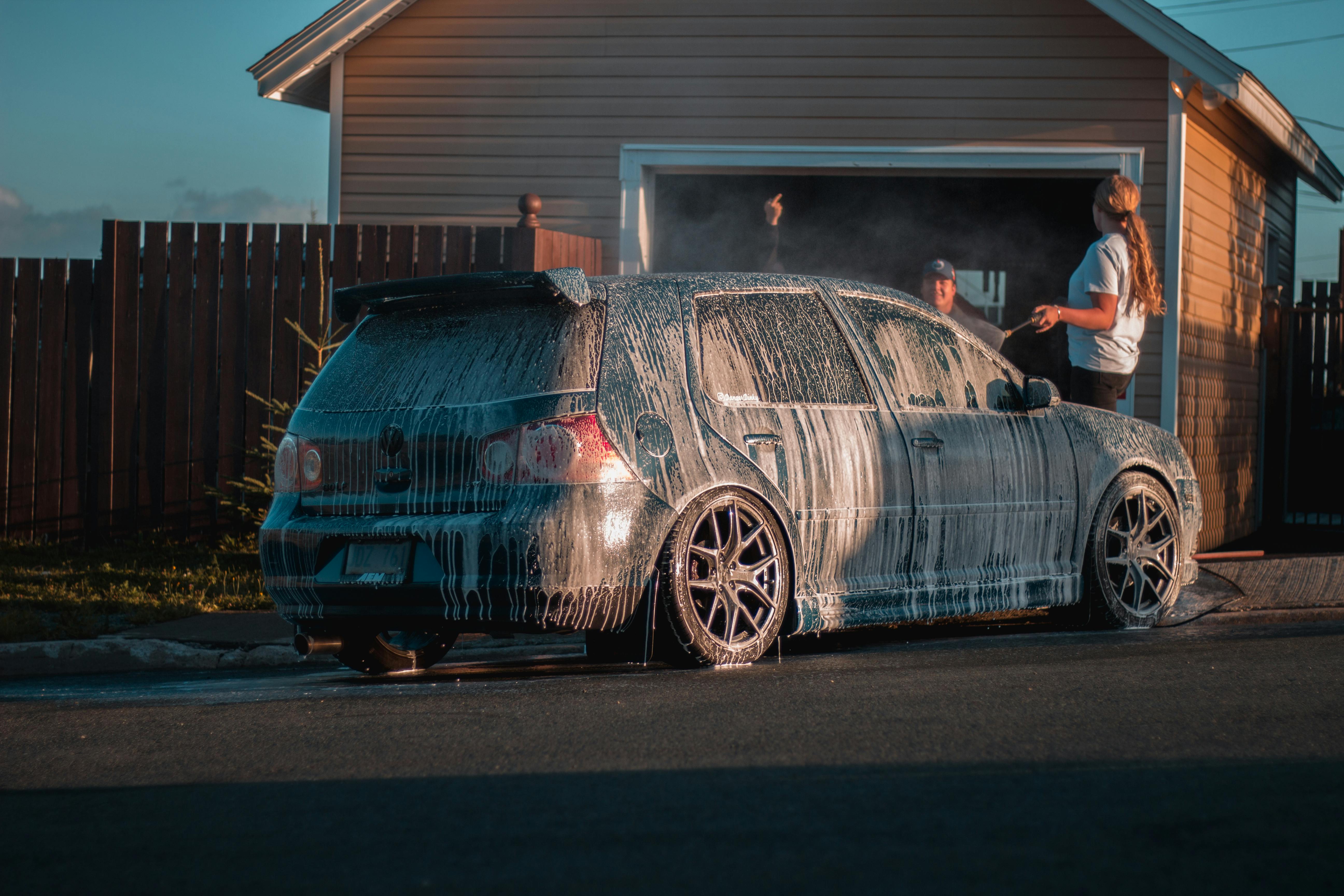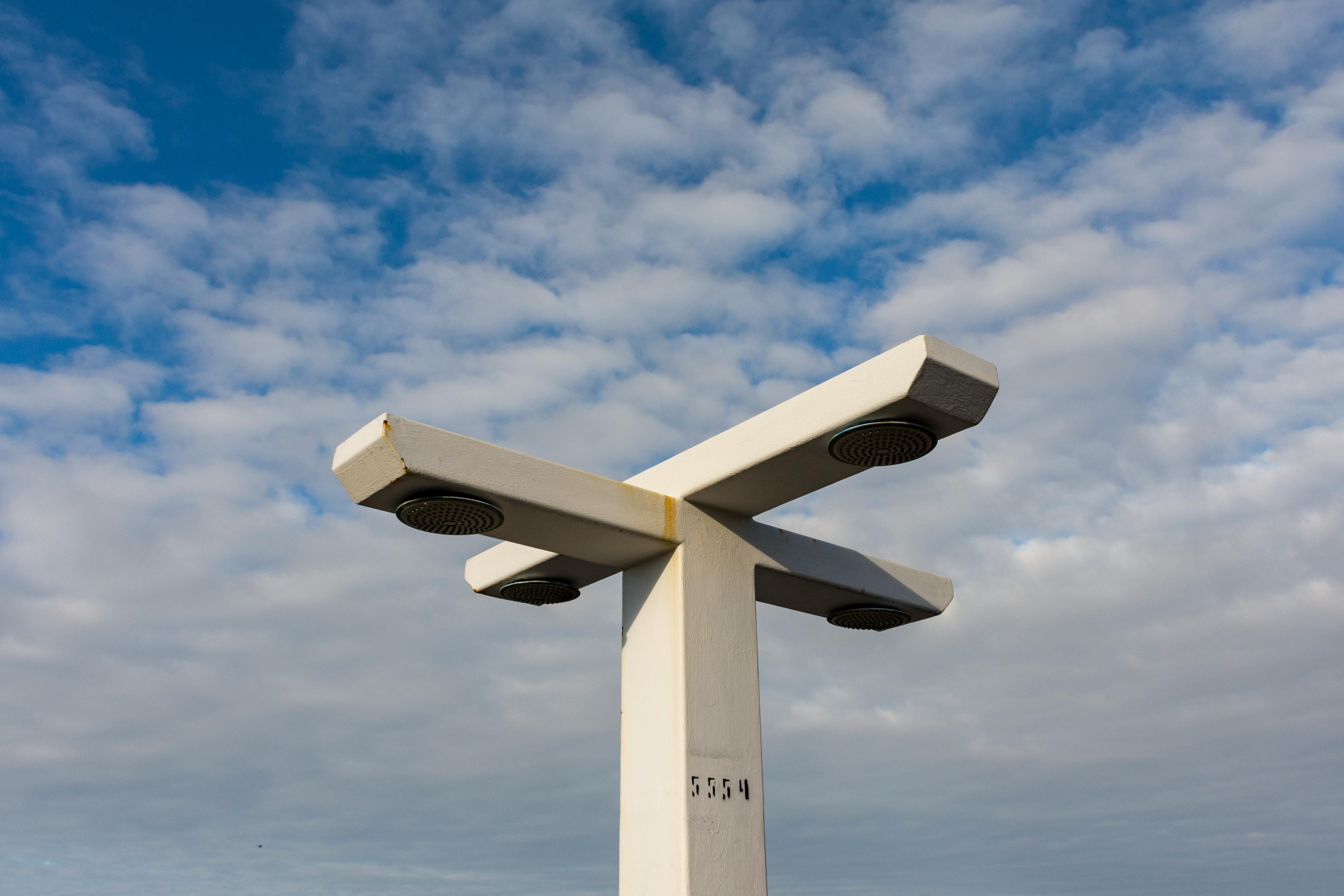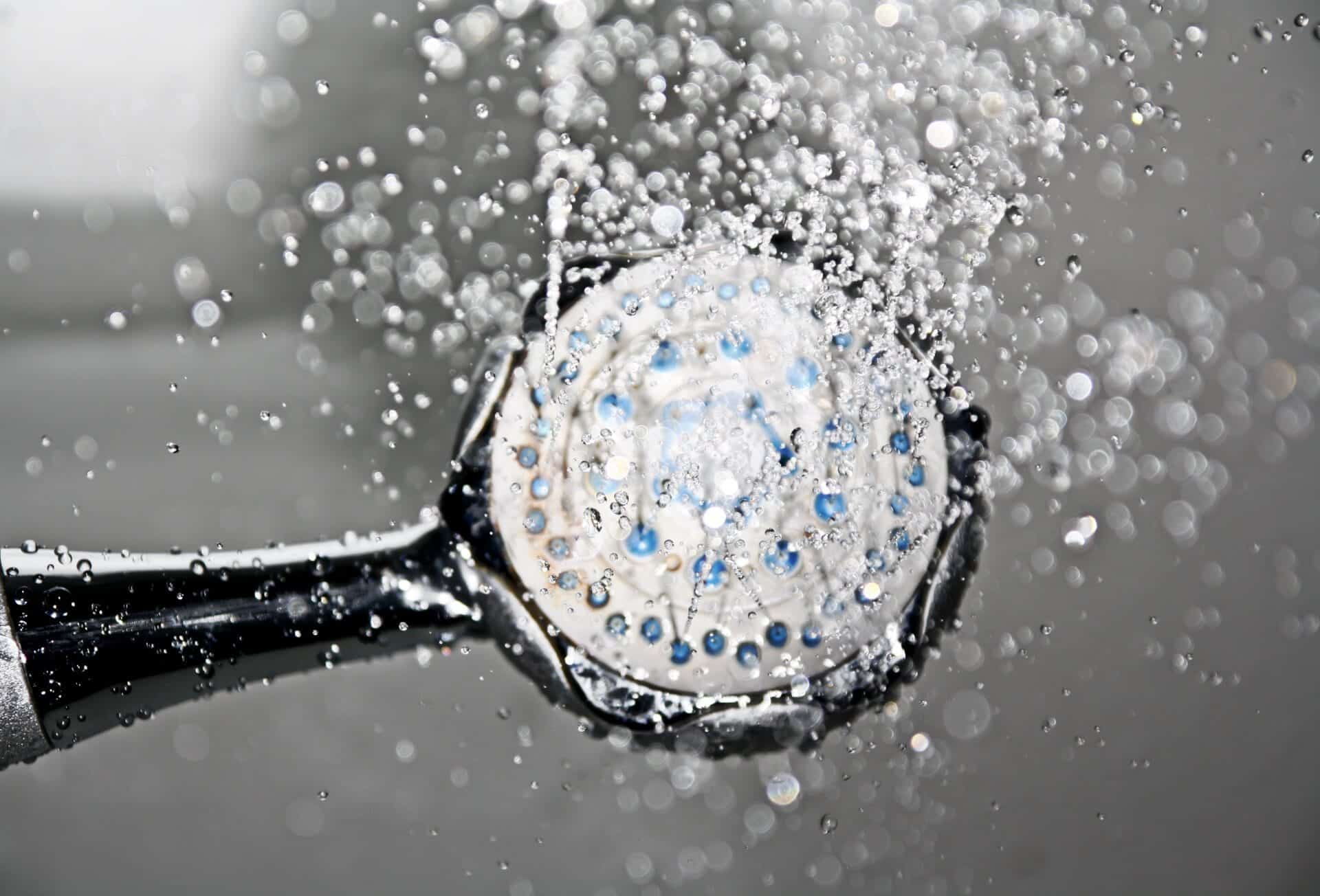Low water pressure in the shower can be a frustrating experience. It can also be quite difficult to determine what is causing the issue. There are a few factors that can affect water pressure, such as the age of the pipes, a faulty showerhead, a leaky faucet, and even an issue with the main water supply. It is important to understand these causes in order to identify and correct the problem.Common causes of low water pressure in showers include a blockage in the pipes, a faulty shower head, an inadequate supply line, or a defective shut-off valve. Other possible causes include scale build-up, corrosion, or a malfunctioning pressure regulator. If the water pressure is suddenly low in the shower, it is recommended to check for any signs of leakage and inspect the showerhead and pipes for any signs of damage or obstruction.
Possible Reasons Behind Low Water Pressure in Shower
Low water pressure in a shower can be extremely frustrating. There are several possible reasons why the water pressure may be low, including clogged pipes, improper installation, or a malfunctioning shower head. It is important to identify the cause of the low pressure in order to find an appropriate solution.
Clogged pipes are a common cause of low water pressure in showers. If there is debris or a buildup of minerals inside the pipes, it can restrict the flow of water and create a decrease in pressure. To check for clogs, you should inspect both hot and cold lines for any blockages or corrosion that could be restricting water flow. If they are blocked, they will need to be cleaned or replaced.
Improper installation of the showerhead can also lead to low water pressure. If the showerhead is not installed correctly, it may not be able to provide adequate flow and thus result in decreased pressure. It is important to make sure that all fixtures are securely attached and properly sealed before use.
Finally, a malfunctioning showerhead can also cause low water pressure in showers. If the showerhead is damaged or worn out, it may not be able to provide adequate flow and thus result in decreased pressure. You should inspect the showerhead for any signs of damage or wear and replace it if necessary.
Identifying the cause of low water pressure in showers is important for finding an appropriate solution. Clogged pipes, improper installation, and malfunctioning showerheads can all lead to decreased water pressure and should be addressed accordingly.
Troubleshooting Low Water Pressure in Shower
Low water pressure in a shower can be a nuisance, and can be caused by a variety of issues. Fortunately, there are steps you can take to troubleshoot and resolve the problem. The most likely culprits when it comes to low water pressure are clogged shower heads, mineral build-up in pipes or valves, or low pressure from the municipal water supply. Here is how you can troubleshoot and resolve the issue of low water pressure in your shower.
The first step is to check if the shower head is clogged with mineral deposits or dirt. To do this, remove the shower head and soak it in white vinegar for an hour. This will help to dissolve any build-up that may be causing the blockage. After an hour, rinse the shower head off with clean water. If this doesn’t resolve the issue, then proceed to the next step.
The next thing to check is whether there is any mineral build-up in your pipes or valves. Mineral build-up can restrict water flow and cause low pressure. To get rid of this build-up, you will need to use a descaling solution such as vinegar or lime juice. Pour the solution into your pipes and let it sit for an hour before flushing it through with clean water.
Finally, if all else fails, you may need to contact your municipality or local water authority to check if there is any issue with the main supply that could be causing low water pressure in your shower. If so, they should be able to help you resolve it quickly and easily.
By following these steps you should be able to easily identify and fix any issues causing low water pressure in your shower. If all else fails, contact your local municipality or water authority for assistance.
Identifying the Cause of Low Water Pressure in Shower
Low water pressure in a shower can be caused by a variety of issues, from blockages and pipe damage to a faulty shower head or pump. Understanding what is causing the low water pressure can help you take steps to solve the problem. Here are some tips for identifying the cause of low water pressure in your shower.
The first step is to check the flow rate coming out of your shower head. You can do this by filling a bucket with water and timing how long it takes to fill up. If it’s taking longer than usual, then you may have a blockage somewhere in your pipes. You should also check for any visible signs of damage on the pipes or other plumbing fixtures.
If there are no visible signs of damage or blockages, then the next step is to check your shower head and pumps. Look for any buildup of sediment or limescale which could be blocking the flow of water. If you find any, then you may need to clean or replace your shower head or pump.
In some cases, low water pressure can also be caused by an issue with your home’s water supply. If you suspect this is the case, then contact your local water company and ask them to investigate further. They may need to send out an engineer to look at your system and identify any potential problems.
Finally, if all else fails, then it’s worth getting a professional plumber in to inspect your system and assess what needs doing to fix the problem. A qualified plumber will be able to identify any underlying issues that could be causing the low water pressure and advise on how best to resolve them quickly and efficiently.
By following these steps, you should be able to identify what is causing the low water pressure in your shower so that you can take steps to fix it as soon as possible.
Clogged or Corroded Pipes May Lead to Low Water Pressure in Shower
Low water pressure in the shower can be caused by clogged or corroded pipes. Clogs can occur anywhere along the water line, including inside the showerhead. Corrosion may form on the interior of older pipes, leading to a decrease in water pressure. The most common signs of clogged and corroded pipes are a decrease in water flow and an increase in noise from the pipes when running the shower. If you experience these symptoms, it is important to diagnose and fix the problem as soon as possible.
The most common way to diagnose low water pressure is by using a flow meter or other measuring device to measure how much water is being delivered to your shower. If you find that the amount of water being delivered is lower than normal, then it could be a sign that your pipes are clogged or corroded. It is also important to inspect any visible piping for signs of corrosion or damage.
If you do find that your pipes are clogged or corroded, it is important to take steps to fix them as soon as possible. Clogs can be cleared with an auger, while corrosion can be treated with an acid-based cleaner designed specifically for this purpose. It is also important to make sure that any new fixtures are properly installed and sealed before use.
In some cases, low water pressure may also be caused by an issue with your municipal water system. If this is the case, then there may not be much you can do on your own aside from contacting your local water provider for assistance.
Low water pressure in showers can cause frustration and lead to a decrease in functionality of fixtures like showerheads and faucets. Taking steps to identify and fix any clogged or corroded pipes will help ensure optimal performance from your plumbing system.

High Demand on the Plumbing System Can Result in Low Water Pressure in Shower
When there is an increased demand on a home’s plumbing system, it can result in a decrease of water pressure when showering. This can be caused by a variety of factors such as aging pipes, insufficient water supply, or too many fixtures hooked up to the same line. It can also be caused by other plumbing issues like a clogged drain or broken pipe. If you’re experiencing low water pressure when showering, it’s important to investigate the cause in order to restore your desired water pressure.
One of the most common causes of low water pressure when showering is an aging plumbing system. In older homes, pipes may be corroded and not able to supply enough water for all fixtures. This is especially true if the home has been remodeled and new fixtures have been added to the existing plumbing system. In this case, it may be necessary to replace some of the older pipes with newer ones that can provide more water flow to meet the needs of all fixtures.
Another possible cause is insufficient water supply from the municipal water source or well. If there is not enough supply coming into your home, then you won’t have enough pressure coming out of your faucets and showers. It could also mean that there are too many fixtures connected to one line and they are competing for the same amount of water which could result in decreased pressure for each individual fixture.
Clogged drains or broken pipes can also lead to low pressure when showering. A clogged drain will slow down or stop the flow of water into your home while a broken pipe will leak out some of your precious supply before it reaches its destination. A qualified plumber should be able to identify any issues with your plumbing and repair them so that you can enjoy proper water pressure again when showering.
If you’re experiencing low water pressure when showering, it’s important to investigate what might be causing it so that you can restore it back to its desired level. Aging pipes, insufficient supply from municipal sources, too many fixtures connected on one line, clogged drains, and broken pipes can all contribute to decreased pressure when showering so make sure you have these checked out by a professional plumber if needed. With their help, you’ll soon enjoy a relaxing and invigorating shower again!
Inadequate Supply Line Size May Lead to Low Water Pressure in Shower
Low water pressure in the shower can be an annoying issue to deal with. It can make showers much less enjoyable, and it can even make it difficult to rinse off soap and shampoo. The main cause of low water pressure in the shower is inadequate supply line size. This means that the pipes that are bringing water from the main water source to your home are not big enough for your needs. If this is the case, then you will have low water pressure in your shower.
When planning a plumbing system, it is important to make sure that adequate supply line size is used so that you will have enough water pressure at all of your fixtures. If adequate supply line size is not used, then you may experience low water pressure in the shower or other fixtures throughout your home.
It may be possible to increase the size of the supply lines if they are too small for your needs. However, this is a major project that requires professional help from a licensed plumber. It may be more cost effective to simply replace all of your plumbing with larger pipes so that you do not have any issues with low water pressure in the future.
Low water pressure in the shower can be very frustrating and it can also be a sign of major plumbing problems within your home. If you think low water pressure could be caused by inadequate supply line size, then contact a professional plumber as soon as possible so they can inspect and diagnose the issue for you.
Poor Design of Plumbing System Can Lead to Low Water Pressure in Shower
Low water pressure in the shower can be a major hindrance and a source of frustration. It can be caused by a variety of factors, one of which is poor design of the plumbing system. The way that a plumbing system is designed can have an impact on the pressure at which water is delivered throughout the home. Poor design may lead to insufficient water flow or even low water pressure in the shower.
There are several factors related to plumbing design that could cause low water pressure in the shower. One common issue is too much friction caused by long or winding pipes. This can reduce the amount of water available for use and cause low water pressure in the shower. Another problem may be too many bends or sharp turns in pipes, which also reduces water flow and leads to low pressures.
Inadequate pipe size is another common issue that can lead to low shower pressures. Pipes that are too small will not allow enough water through, so less reaches the shower head and causes low pressures there. If multiple fixtures are connected to a single pipe, then this can also reduce the amount of available flow for each fixture, leading to lower than desired pressures at each one.
Poorly designed systems may also have issues with air being trapped inside pipes and reducing flow rates further down the line, leading to shower pressure problems as well. This often happens when there are multiple bends or turns in pipes, which create pockets where air can become trapped, reducing flow rates downstream and leading to low pressures at fixtures like showers.
If you’re experiencing low water pressure in your shower, it may be worth having your plumbing system inspected by a professional plumber to identify any potential design issues that could be causing it. Fixing these problems may help improve your overall water pressure and make your showers more enjoyable again.

Conclusion
Low water pressure in the shower can be caused by a variety of factors, most of which are related to plumbing or the water supply system. The most common causes of low water pressure in the shower include clogged pipes, corroded pipes, worn out fixtures and valves, and insufficient water supply. In some cases, low pressure might be due to a problem with the municipal water system. In any case, it’s important to identify the source of the problem and take the appropriate steps to fix it.
The best way to diagnose and resolve low water pressure in your shower is to contact a professional plumber for advice and assistance. A plumber can inspect your plumbing system and diagnose any potential issues that could be causing low water pressure. They can then suggest possible solutions and help you implement them.
In summary, low water pressure in the shower can be caused by a variety of factors, such as clogged pipes, corroded pipes, worn out fixtures and valves, or insufficient water supply. The best way to identify and resolve this issue is to contact a professional plumber for assistance.

